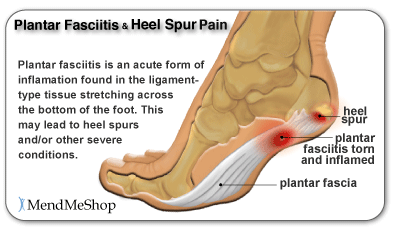Plantar Fasciitis Braces in Pak Sha O Ha Yeung HKSAR
Podiatrists for Plantar Fasciitis Treatment in Pak Sha O Ha Yeung HKSAR, China

Persistent Achilles Tendon Problems. Achilles Tendonitis is a term that typically describes a swelling of the Achilles tendon or its covering. Keeping your tendons, ligaments, and muscles strong and versatile will help in your recovery and assist you keep from reinjuring your Achilles tendon. Starting a training program after a period of inactivity or adding hills or miles to a jogging routine are 2 examples of things that put people at danger for Achilles tendonitis. Additionally, wearing high heels all the time can trigger the tendon and calf muscles to get shorter, and the switch to flat shoes and workout can put additional pressure on the heel. I 'd nearly given up running range entirely after the most current occurance. Foot and ankle discomfort also may be a sign of other overuse injuries that can cause foot and heel discomfort, like plantar fasciitis and Sever's illness. Achilles tendon injuries account for 5-12 % of all running injuries, and happen disproportionately in men. This can happen throughout an intense athletic activity or even during simple running or jumping. Initially, the podiatrist may treat the Achilles tendonitis by putting heel lifts into the patient's shoes. Persistent achilles tendinosis is a hard condition to deal with, especially in older athletes who appear to suffer more often. So this insertion tendosis is the worst running injury I have actually ever had (10+ yrs of running 60 mpw). I found not just custom orthotics to be a waste of money, however heel lifts likewise intensified the scenario for me - in reality, the more time I invested barefoot or in my Nike Free's, the much better I felt. Think about altering your exercise routine if you think running or another high-impact sport is triggering your foot pain. While we may propose that runners do calf stretching to chill out their calf muscles and increase their ankle variety of motion, this typically does more harm than good-- pulling aggressively on the damaged tendon fibers is similar to pulling on either end of a knotted rope. I hope I will be able to eliminate these products one day, however as of today, that's what it took me to be able to run for about 1 hour, or something like 7 km ... without major pain. A podiatrist can perform gait analysis to identify any biomechanical issues and fix them with orthotic inserts which are worn inside shoes, or for less sever cases encouraging on appropriate footwear for your running style. For example running on soft surfaces, specifically sand is not good for the achilles tendon as it enables the heel to sink triggering additional stretch on the tendon. Many specialist running stores will do gait analysis and have experience of encouraging the correct shoes. Check in with your medical professional before it gets any worse if you believe you might have Achilles tendonitis. Later on after totally packing my achilles up on hardfloor courts, i went to the GP who said i had IT and had to see a physio or sports podiatric doctor to obtain sorted. However, you must never try these as a very first resort or you could do more damage to the plantar and enhance your recuperation time. Symptoms of Achilles tendon issues consist of swelling in the ankle location and mild or serious discomfort. The advised treatment for Achilles tendinitis consists of icing, mild stretching, and restricting or customizing activity. Non-steroidal anti-inflammatory drugs (NSAIDS) such as ibuprofen (Motrin, Advil) and naproxen (Naprosyn, Aleve) may also be recommended to soothe the inflammatory procedure in the tendon. Achilles tendonitis is diagnosed by a history and physical exam of the client who explains discomfort at the back of the ankle with strolling and/or running activities.
Heel Pain Doctors and Surgery in Hong Kong
Previous Plantar Fasciitis Brace Next Plantar Fasciitis Brace Supplier
Plantar Fasciitis Braces Around Hong Kong
Plantar Fasciitis Braces in Long Kau Tang HKSAR
Plantar Fasciitis Braces in Lawkong HKSAR
Plantar Fasciitis Braces in Lin Au HKSAR
Plantar Fasciitis Braces in Kau Wa Keng San Tsuen HKSAR
Plantar Fasciitis Braces in Nam Hang HKSAR
Plantar Fasciitis Braces in Chung Mei Kok HKSAR